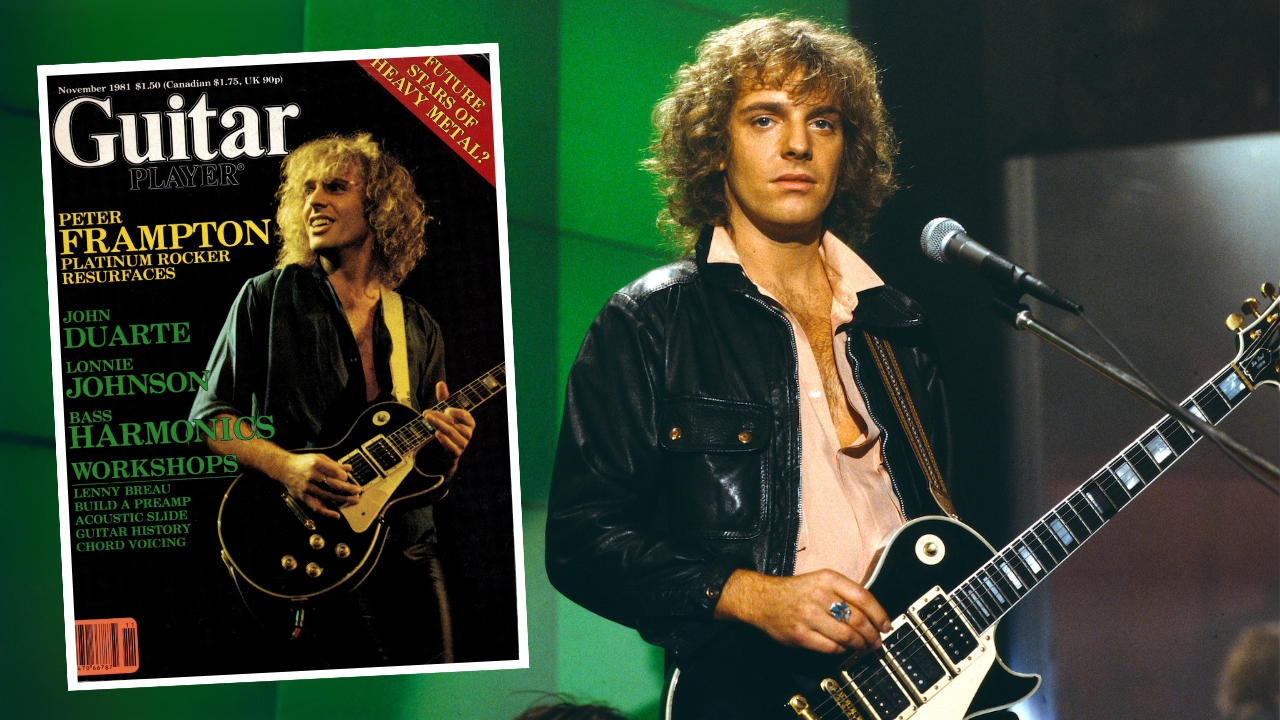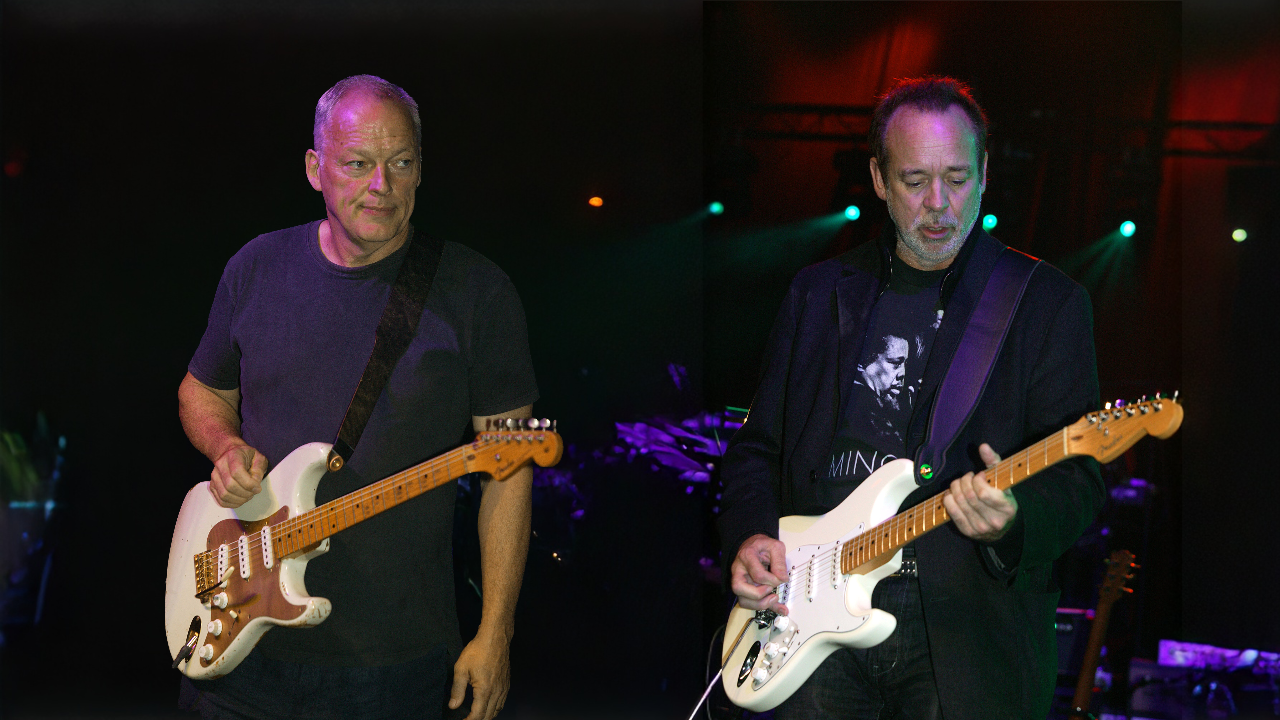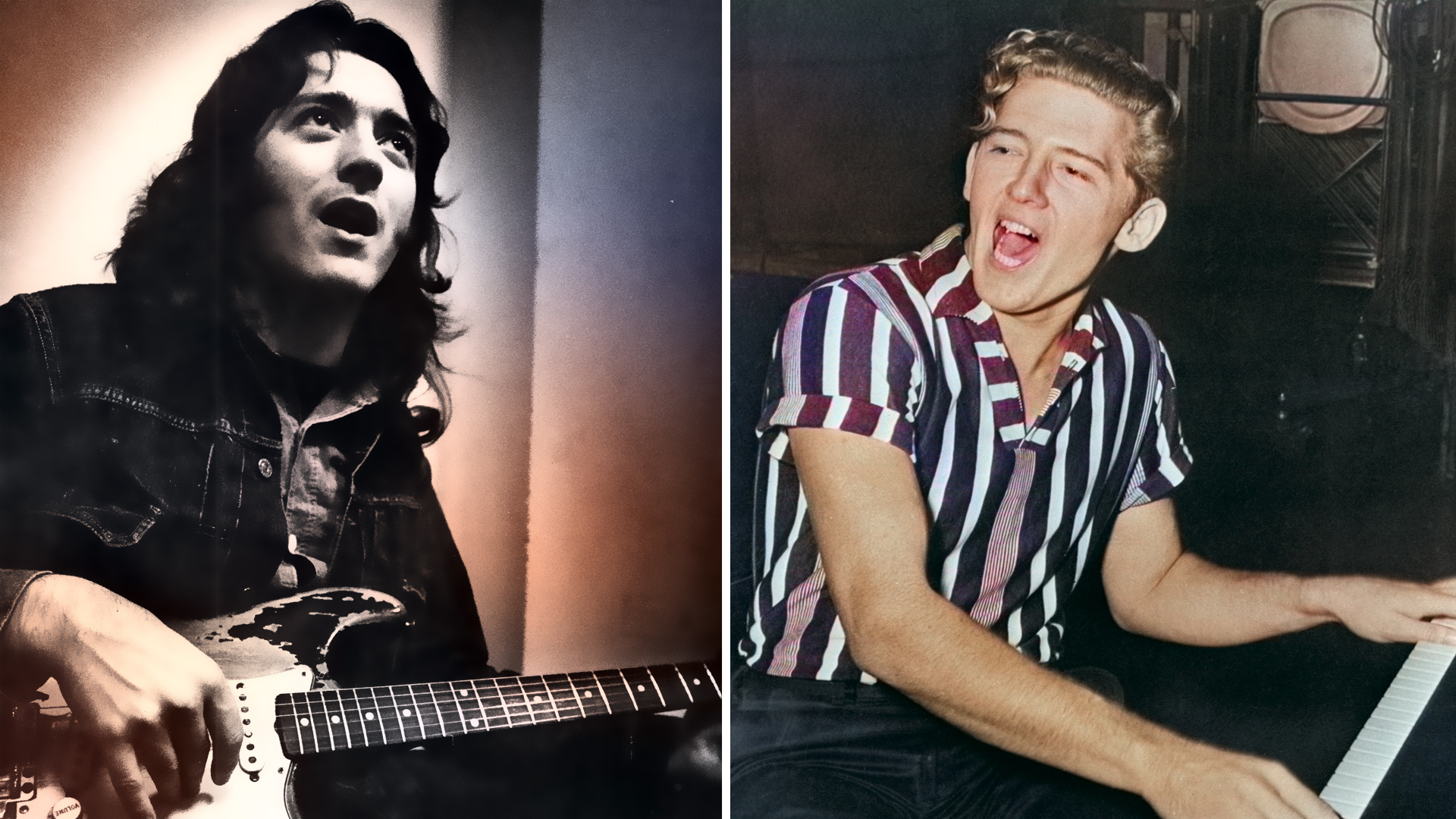"Play one note per chord and watch what happens." Ron "Bumblefoot" Thal says his top guitar tips will help you break out of ruts and engage with the music

Bumblefoot… Returns! might strike some as a strange album title. After all, its creator, Ron “Bumblefoot” Thal, never really went away; in fact, since the release of his first record, 1995’s Bumblefoot, the electric guitar virtuoso been downright omnipresent, issuing nine other solo albums while spreading his guitar and vocal talents across a diverse array of bands, chief among them, Guns N’ Roses, Sons of Apollo and Asia.
“I’ve been around a good while,” Thal says, “long enough to see everything change in the way we make records. Thirty years ago, I was signed to Shrapnel Records. They handled distribution and oversaw the business. I did the writing, playing and mixing, and I designed my album cover on Windows 95. It wasn’t so easy to put music out 30 years ago. There were gatekeepers who controlled what people got to hear. The process could really grind you down.”
These days, Thal is his own boss, recording albums at his New Jersey home that he says “sound just as good as something I could do in a big studio. Creatively, it’s a dream come true — I can record a song and in two days the whole world can hear it. Economically, the situation could be better. This is why artists tour so much — we can’t depend on just one revenue stream.”
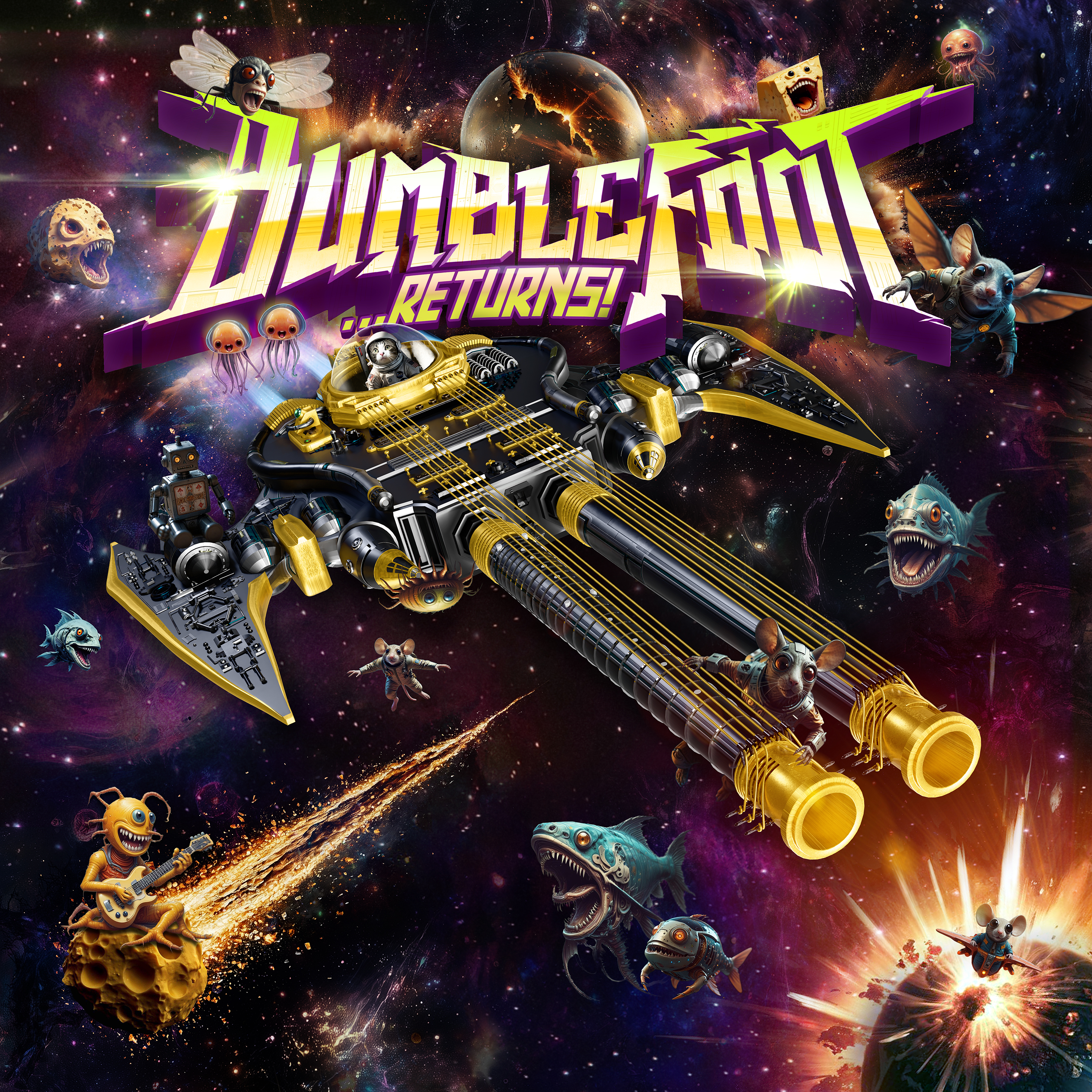
The all-instrumental Bumblefoot… Returns! is a sustained blast of musical razzle-dazzle, encompassing everything from molten metal to turbo-charged orchestral pieces to high-velocity cosmic blues.
“A lot of the songs come from random moments of inspiration, Thal says. “I could be driving my car and a melody will come to me. In the case of ‘Moonshine Hootenanny,’ I watched a documentary about blues players, and I saw this clip of Lonnie Johnson. He was playing a zydeco rhythm that reminded me of guys playing washboards in jug bands. It just made me smile, so I grabbed my fretless guitar and playing. I felt like I was in the movie Raising Arizona.”
The aptly named “Monstruoso” is a sci fi metal stunner that features more dazzling guitar goodness than any song has a right to. But Thal doesn’t keep all the fun to himself: Those wicked, harmonized sheets of seven-string sound are courtesy of no less than Steve Vai, who is currently on tour with Beat, the Robert Fripp–approved King Crimson tribute band.
“I’m so happy that Steve is on the record,” Thal says. “I didn’t impose any restrictions on him; I just sent him the track and reveled in what he sent back.” He adds with a laugh. “I’m still trying to figure out what he did.”
Thal followed a similar tactic with another iconic guest, Brian May, who has been recovering from a minor stroke he had last September. May's instantly recognizable guitar work shines on Bumblefoot's lush ballad “Once in Forever.”
“When you ask Brian May to play on your song, you want Brian May to be Brian May,” Thal says. “Which means, he can do whatever he wants. He and I have been emailing each other for the past 15 years. We also played together at a festival called Starmus. It's a combination of astrophysics and music. Playing with Brian is unreal. He’s very humble and gracious, and I was thrilled when he agreed to do my record.”
Bumblefoot… Returns!, which also features collaborations with Guthrie Govan and Derek Sherinian, among others, will be released on January 24. After chatting about his album, Thal was only too happy to share a few sage pieces of advice for fellow guitarists. That’s the kind of guy he is.
1. Play Along to Songs You’re Unfamiliar With
“This is something I started doing as a kid. Over time, it really helped me build pitch recognition and intuition.
"I would take an album I was totally unfamiliar with, put it on the turntable, and I’d play along to it and try to catch on. It was crazy at first: ‘What’s going on in the verse? Oh, is that the chorus?’ But by the time I heard the verse again, I had an idea what to do. Then a bridge would come up, and I’d have to figure that out.
“It was an adventure. I would play along to both sides of a record, and then I’d do my normal practice routine. What I took away from it was that I didn’t have to be afraid to play. Not knowing what to expect was very liberating and confidence building, and that came in handy when I started to play with other people. And because I was strictly going by my ears — I was listening and reacting instantaneously — it sharpened my pitch recognition. You’re on one chord, and then it switches and you have to find your next move fast. Pretty soon, you don’t have to think about the distance between chords. You can predict that C chord and jump to it.”
2. Play Quick Trills With Every Combination of Fingers
“There are different types of muscle fibers in the body. There's slow-twitch and there's fast-twitch fibers. A lot of times for quicker playing, you're engaging the fast twitch reflex muscles. So by doing quick trills at 80 bpm with every finger combination, you’re loosening your digits up and building your endurance. I can’t overemphasize the word ‘loose’ here. You shouldn’t tense your hand or fingers; everything must be relaxed.
“This kind of exercise should feel like a burst of electricity that jumps out of your hand. I liken it to when you look down and you see a spider crawling on your hand. Suddenly, your hand shakes like crazy and you don’t even think about it. Play the trills the same way, and do it a lot.”
3. Be Overly Prepared, Be Extra Early
“If you’re given a song to learn for rehearsal or maybe a recording, go that extra step and learn all the parts — drum fills, bass lines, vocal melodies and harmonies. It’s just a good idea to know the whole song when people are discussing parts and changes, and there will always be changes. But you never know when you might be asked to sing something or play another instrument. Be prepared.
“And whatever you do, be on time — as in when you arrive. If you need to be there at 3 p.m., be there at 2:30. Don’t make people wait for you. It shakes their faith in your reliability, commitment and respect for other people. Being on time is a sign of respect. It tells people in action, not words, that this matters to you. I’ve seen it happen: Somebody doesn’t show up, and everybody’s going, ‘Who is this guy? Is he blowing us off? Does he not care?’ Don’t be that guy.
“I’m never, ever late for anything. In fact, I’m the kind of guy who gets somewhere 15 minutes early and sits in his car. That’s just the way I do things. I’ll call the other people and be like, ‘Hey, I’m here,’ just to let them know they don’t have to worry about when I’m showing up.”
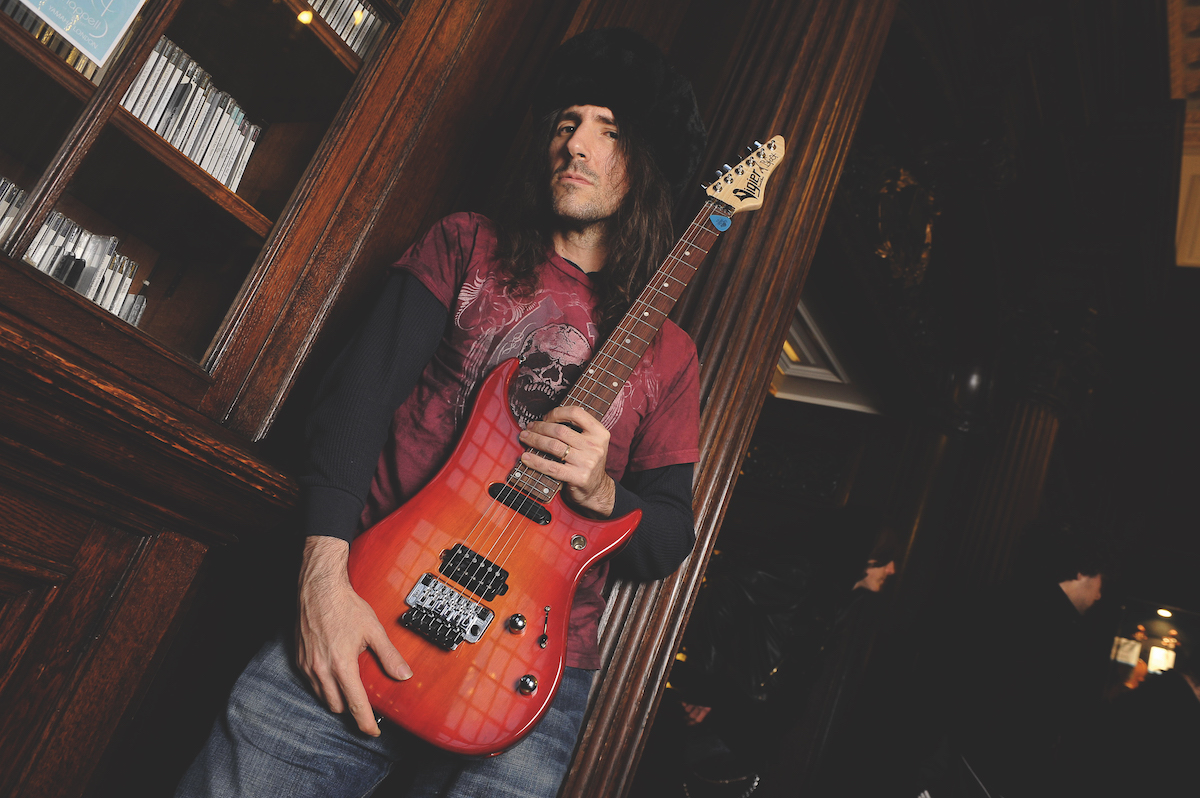
4. Support the Team
“If you’re in a band, you’re part of a team. You’re partners with other people. Let’s say your band is made up of five people; if everybody gets to have a say — which isn’t always the case, but here it is — out of five ideas you should expect to get one of yours through. At the same time, you’re probably going to have four out of five of your ideas shot down. That’s okay – don’t be offended. Every time you get your way, the other four people may have had their ideas shot down.
“Put your ego aside. When somebody gets their way about something they feel passionate about, be selflessly happy for them. They deserve to see their idea through. Don’t be controlling — just go with the flow and see where it goes. In the end, you may find that their ideas were better than yours. That’s okay, too — the whole band looks good.”
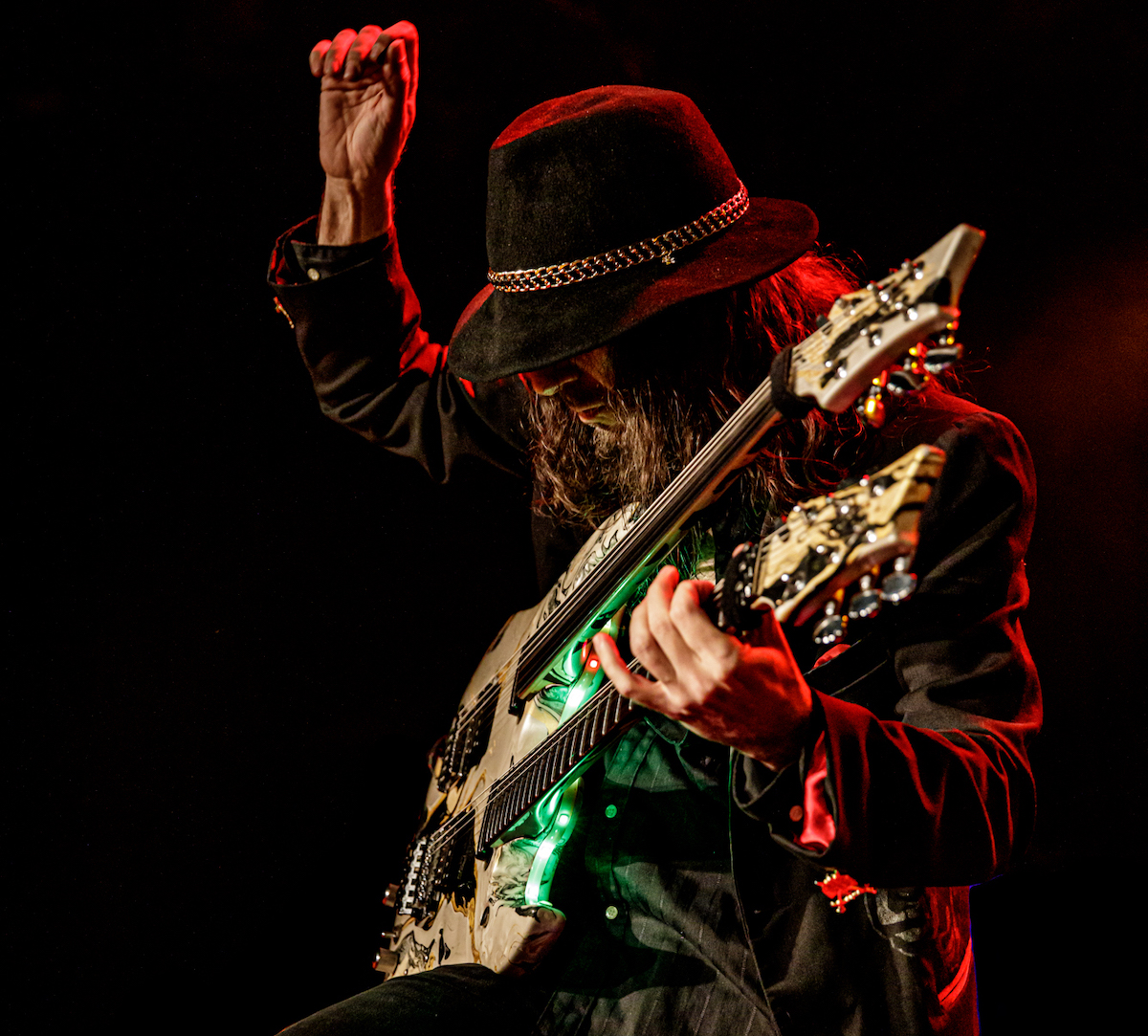
5. Play One Note Per Chord
“All too often, guitarists blast out flurries of notes over whatever chord the rest of the band is playing. They go through scales and patterns mindlessly. It all sounds like something they do by habit, and after a while, it all sounds the same. It makes it clear that they’re not really thinking about the music — they’re just engaging in an exercise.
“I have a good tip for connecting to the music: Play one note per chord. Play a whole note, let it ring out, and watch what happens. What that will do is, it will force you to think about what should come next. You’re giving yourself a break and allowing yourself to hear the tones, how they blend, where they go. You can hear the structure of sounds as they connect, and you’ll have a better sense of where to go next. It might take a while to get this down — you’ll want to break into the usual flurry of notes. But trust me, you’ll hear the music in a more interesting way with this one-note-per-chord technique.”
6. Character Means More Than Contracts
“If someone is going to do the right thing, they'll do it on their word and a handshake, whether there's a contract or not. On the other hand, if someone is going to screw you, they're going to whether there's a contract or not. If you sense that someone might be a manipulative, lying sleazebag, don't ignore your gut and gamble on hope. You're passionate and hungry to achieve your goals, which makes you an easy target. The 'industry' is filled with opportunistic frauds. Always trust your gut, and remember that character matters most. Try to minimize exposure to the ticks and leeches; they're hard to get rid of cleanly once they attach themselves to you.”
Get The Pick Newsletter
All the latest guitar news, interviews, lessons, reviews, deals and more, direct to your inbox!

Joe is a freelance journalist who has, over the past few decades, interviewed hundreds of guitarists for Guitar World, Guitar Player, MusicRadar and Classic Rock. He is also a former editor of Guitar World, contributing writer for Guitar Aficionado and VP of A&R for Island Records. He’s an enthusiastic guitarist, but he’s nowhere near the likes of the people he interviews. Surprisingly, his skills are more suited to the drums. If you need a drummer for your Beatles tribute band, look him up.
“Write for five minutes a day. I mean, who can’t manage that?” Mike Stern's top five guitar tips include one simple fix to help you develop your personal guitar style
"It’s like you’re making a statement. And you never know where it’ll lead." Pete Thorn shares the tip that convinced Joe Satriani he was the right guitarist for the SatchVai Band
![Bumblefoot - Simon In Space [Official Music Video] - YouTube](https://img.youtube.com/vi/ahh-Q0gveWM/maxresdefault.jpg)


